Hyundai Accent: Crash Pad / Cowl Cross Bar Assembly
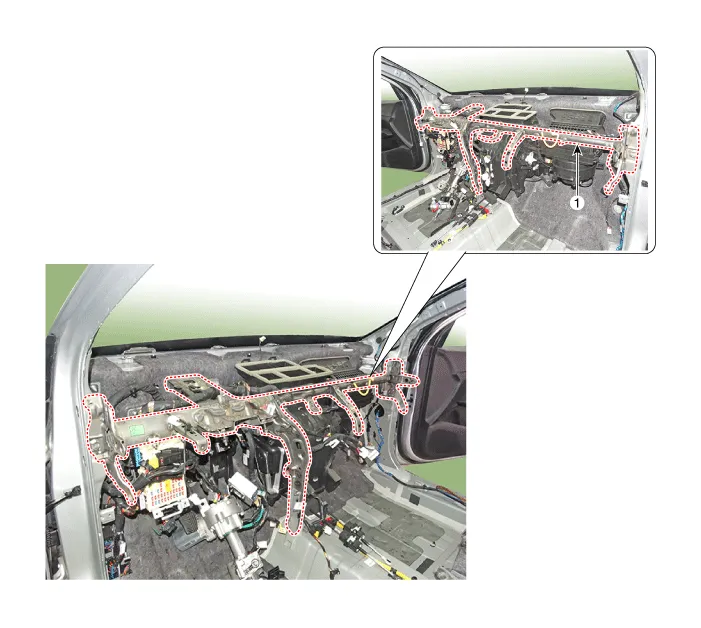
1. Cowl cross bar assembly

• Put on gloves to prevent hand injuries.

• When removing with a flat - tip screwdriver or remover, wrap protective tape around the tools to prevent damage to components.
• Use a plastic panel removal tool to remove interior trim pieces without marring the surface.
• Take care not to bend or scratch the trim and panels.
1.Disconnect the negative ( - ) battery terminal.
2.Recover the refrigerant with a recovery/recycling/charging station.
3.Remove the cowl top cover.(Refer to "Cowl Top Cover")
4.Disconnect the steering column connectors.(Refer to Steering System - "Steering Column and Shaft")
5.Loosen the mounting nuts and through bolts in the frontal area and lower the steering column.(Refer to Steering System - "Steering Column and Shaft")
6.Disconnect the expansion valve from the evaporator core.(Refer to Heating,Ventilation and air Conditioning - "Heater Unit")
7.Disconnect the inlet and outlet heater hoses from the heater unit.(Refer to Heating,Ventilation and air Conditioning - "Heater Unit")
8.Remove both sides of front seat assembly.(Refer to Front Seat - "Front Seat Assembly")
9.Remove the main crash pad assembly.(Refer to Crash Pad - "Main Crash Pad Assembly")
10.Remove the shift lever assembly.(Refer to Manual Transaxle System - "Shift lever") (Refer to Automatic Transaxle System - "Shift lever")
11.Loosen the cowl cross bar mounting bolts.
Tightening torque : 16.7 - 25.5 N.m (1.7 - 2.6 kgf.m, 12.3 -18.8 lb-ft)
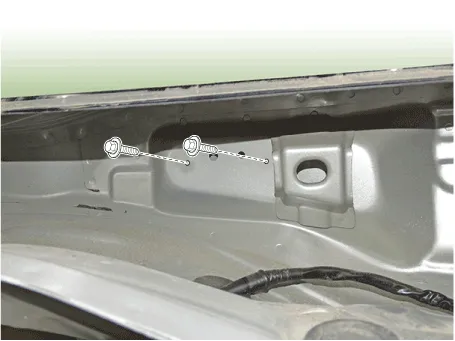
12.Disconnect the airbag control module (SRSCM) connector (A).
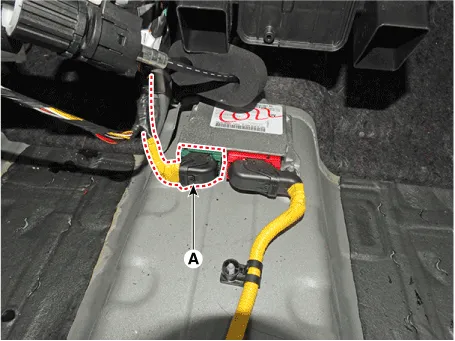
13.Remove the rear air duct (A)
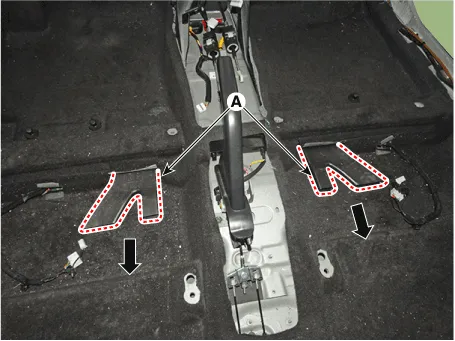
14.Separate the floor carpet (A) to obtain space for removing the rear heating duct.
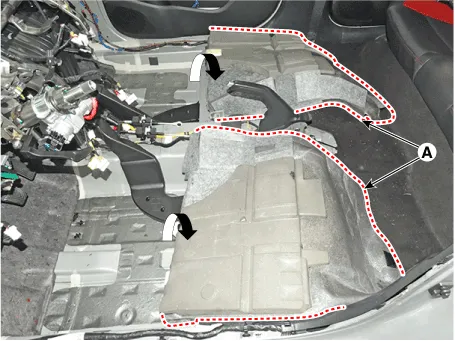
15.Loosen the mounting nuts and remove the front air duct (A).
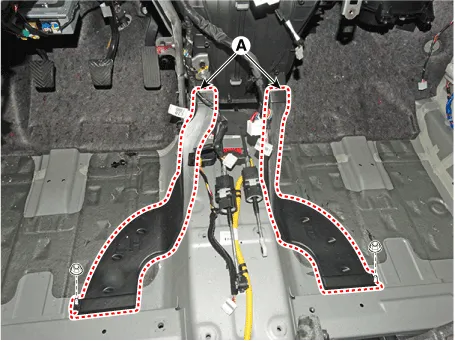
16.Disconnect the connector (A) and the mounting wiring fasteners in the front pillar.
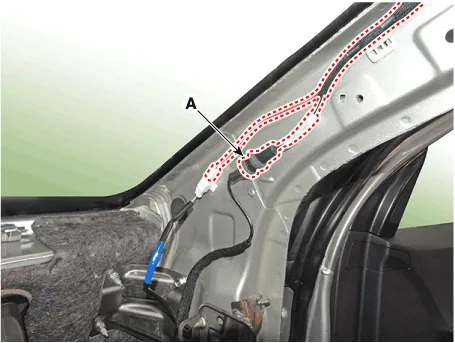
17.Disconnect the diagnosis connector (A).
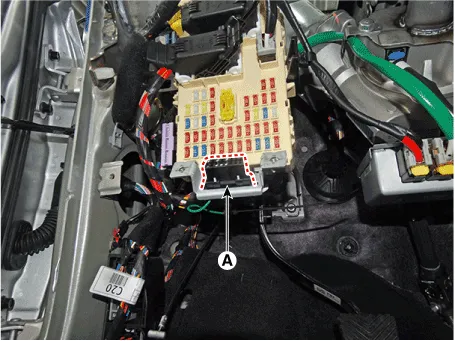
18.Disconnect the passenger compartment junction box connectors (A).

19.Disconnect the multi box connectors (A).[Driver's]
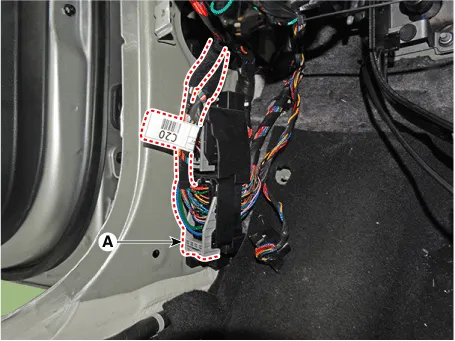
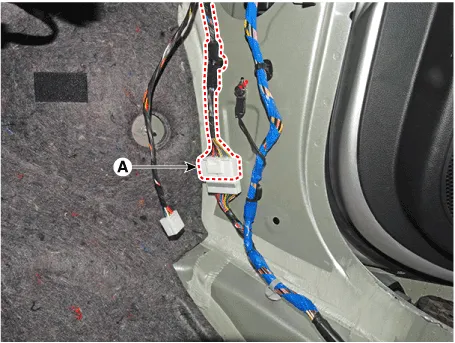
20.Disconnect the heater and blower unit connector.
(1)Disconnect the mode actuator connector (A).
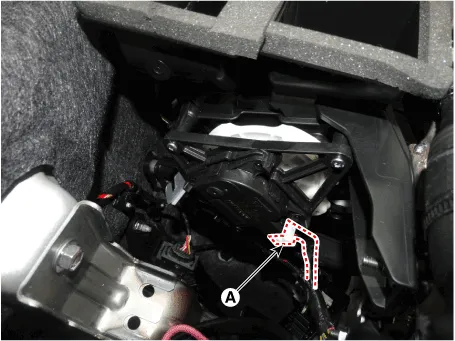
(2)Disconnect the evaporator temperature sensor (A), and power mosfet (B).
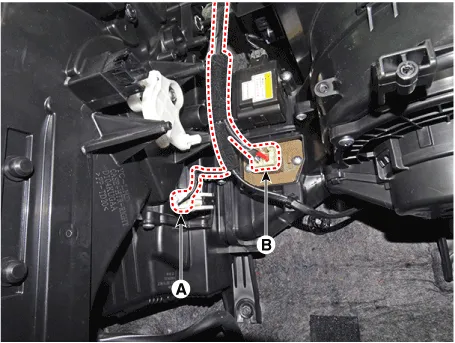
(3)Disconnect the cluster ionizer (A) and intake actuator connector (B).
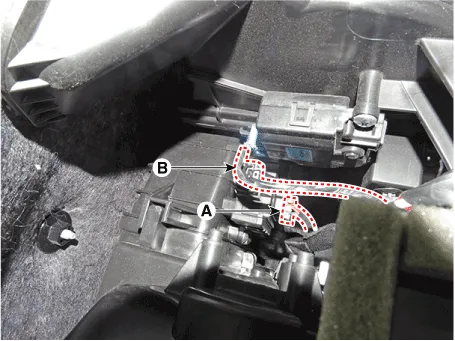
(4)Disconnect the blower motor connector (A).
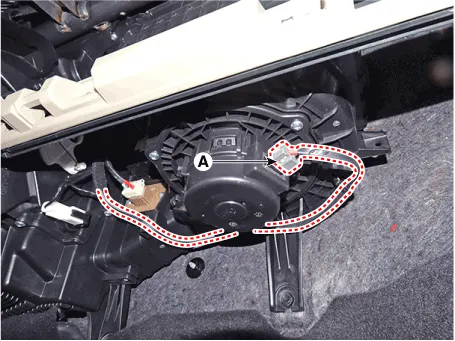
21.After loosening the bolts and nuts, remove the cowl cross bar assembly (A).

22.To install, reverse the removal procedure.

• Make sure the crash pad fits onto the guide pins correctly.
• Before tightening the bolts, make sure the crash pad wire harnesses are not pinched.
• Make sure the connectors are plugged in properly, and the antenna lead is connected properly.
• Enter the anti- theft code for the radio, then enter the customer`s radio station presets.
• Make sure that each of the assembly components operates properly.
• Replace any damaged clips (or pin - type retainers).
Other information:
Hyundai Accent (HC) (2017 - 2022) Service Manual: Timing Chain
- Removal 1.Disconnect the battery negative terminal. 2.Turn the crankshaft damper pulley clockwise, and align its groove with the timing mark of the timing chain cover. 3.Remove the timing chain cover.(Refer to Timing System - "Timing Chain Cover") 4.Remove the cam to cam guide (A). 5.Remove the timing chain tensioner (A) and remove the timing chain tensioner arm (B).Hyundai Accent (HC) (2017 - 2022) Service Manual: CVVT & Camshaft
- Description Continuous Variable Valve Timing (CVVT) system advances or retards the valve timing of the intake and exhaust valve in accordance with the ECM control signal which is calculated by the engine speed and load.By controlling CVVT, the valve over-lap or under-lap occurs, which makes better fuel economy and reduces exhaust gases (NOx, HC) and improves engine performance through reduction of pumping loss, internal EGR effect, improvement of combustion stability, improvement of volumetric efficiency, and increase of expansion work.
Categories
- Manuals Home
- Hyundai Accent Owners Manual
- Hyundai Accent Service Manual
- New on site
- Most important about car


